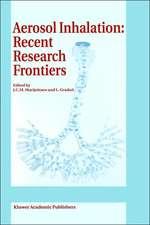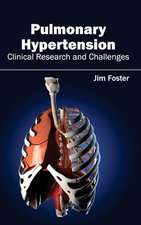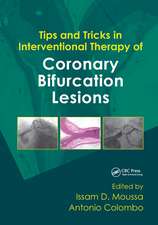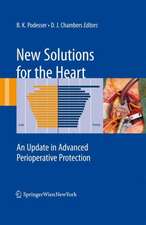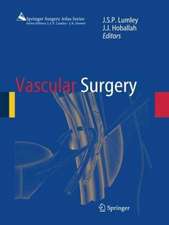Percutaneous Interventions for Structural Heart Disease: An Illustrated Guide
Editat de Bernhard Reimers, Issam Moussa, Andrea Pacchionien Limba Engleză Paperback – 24 mai 2017
Preț: 1010.12 lei
Preț vechi: 1063.28 lei
-5% Nou
Puncte Express: 1515
Preț estimativ în valută:
193.28€ • 202.35$ • 159.93£
193.28€ • 202.35$ • 159.93£
Carte tipărită la comandă
Livrare economică 01-07 aprilie
Preluare comenzi: 021 569.72.76
Specificații
ISBN-13: 9783319437552
ISBN-10: 3319437550
Pagini: 342
Ilustrații: XI, 321 p. 209 illus., 140 illus. in color. With online files/update.
Dimensiuni: 155 x 235 x 25 mm
Greutate: 0.57 kg
Ediția:1st ed. 2017
Editura: Springer International Publishing
Colecția Springer
Locul publicării:Cham, Switzerland
ISBN-10: 3319437550
Pagini: 342
Ilustrații: XI, 321 p. 209 illus., 140 illus. in color. With online files/update.
Dimensiuni: 155 x 235 x 25 mm
Greutate: 0.57 kg
Ediția:1st ed. 2017
Editura: Springer International Publishing
Colecția Springer
Locul publicării:Cham, Switzerland
Cuprins
Part I: Aortic Valve Intervention.- Severe Aortic Stenosis Treatment: Percutaneous Options, Patient Selection & Preoperative Evaluation.- How to Size Aortic Bioprosthesis.- Techniques & Devices.- Aortic Perivalvular Leakage: Percutaneous Treatment Options.- Difficult Cases and Complications from the Catheterization Laboratory: Case 1.- Difficult Cases and Complications from the Catheterization Laboratory: Case 2.- Difficult Cases and Complications from the Catheterization Laboratory: Case 3 “The Importance of Being Prepared”.- Current and Next Generation of Transcatheter Valves.- Part II: Mitral Valve Intervention.- Severe Mitral Regurgitation Treatment: Percutaneous Option, Patient Selection & Preoperative Evaluation.- Techniques & Devices (Including Tips in the Box: How to Perform Transeptal Technique).- Perivalvular Leakage: Percutaneous Treatment Options.- Difficult Cases and Complications from Catheterization Laboratory: MitraClip Therapy in a Patient with Lack of Leaflets Coaptation.- Difficult Cases and Complications from Catheterization Laboratory: A Case of Mitral Cleft.- Difficult Cases and Complications from Catheterization Laboratory: Successful Percutaneous Mitral Valve Repair with Three Mitraclip Devices in a Complex Case of Severe Functional Mitral Regurgitation.- Part III: Left Appendage Closure.- Percutaneous Left Atrial Appendage Closure: Rational, Patient Selection, and Preoperative Evaluation.- Device Selection According to Anatomy.-. Techniques & Devices.- Difficult Cases and Complications from the Catheterization Laboratory: Left Atrial Appendage Perforation during Percutaneous Closure.- Difficult Cases and Complications from the Catheterization Laboratory: Left Atrial Appendage Closure Step-by-Step.- Part IV: Patent Foramen Ovale Closure.- Percutaneous Options, Patient Selection & Preoperative Evaluation.- Techniques & Devices.- Difficult Cases and Complications from the Catheterization Laboratory: PFO Device Embolization and Settling in the Distal Aorta.- Difficult Cases and Complications from the Catheterization Laboratory: A Case of Platypnea-Orthodeoxia Syndrome.- Difficult Cases and Complications from the Catheterization Laboratory: A Case of Nitinol Intolerance.- Part V: Interventricular Defect Closure.- Percutaneous Repair of Post-Myocardial Infarction Ventricular Septal Rupture.- Difficult Cases and Complications from the Catheterization Laboratory: Interventricular Defect Closure.- Difficult Cases and Complications from the Catheterization Laboratory: Post-Infarction Ventricular Septal Defect Closure.
Recenzii
“This is a practical guide that discusses and illustrates various aspects of structural heart interventions. … The intended audience is the expanding community of interventionists performing structural heart therapies. … This is a concise, yet thorough, practical guide to percutaneous interventions for structural heart disease. It includes numerous diagrams and illustrations of various interventions, procedural techniques, and available devices. It also has many practical tips that are essential for interventionalists who are interested in structural heart therapies.” (Sameh Mohareb, Doody's Book Reviews, October, 2017)
Textul de pe ultima copertă
This book presents the percutaneous techniques and technologies most frequently employed in structural interventional cardiology, focusing especially on how to optimize outcomes and minimize risk. Interventional procedures for aortic stenosis, mitral regurgitation, left atrial appendage closure, patent foramen ovale closure, and closure of interatrial and interventricular defects are clearly presented step by step with the aid of a wealth of images. These descriptions are complemented by a case-based analysis of the various structural pathologies and their complications. Clear guidance is also provided on patient selection, preoperative evaluation, and choice of available devices. The authors are all acknowledged experts with extensive experience in laboratories and surgical units. The book fully reflects the rapid changes in structural interventional cardiology that have occurred during recent years. These advances are in particular due to the introduction of transcatheter aortic valve implantation, which allows cardiac surgeons to achieve excellent outcomes in patients at high surgical risk. Other exciting developments include new technologies that permit better treatment of other structural cardiac pathologies and valid alternatives to medical therapy in particular patient groups.
Caracteristici
Describes the most frequently used interventional procedures step by step Offers a case-based analysis of various structural pathologies and their complications Includes a wealth of helpful and informative illustrations

